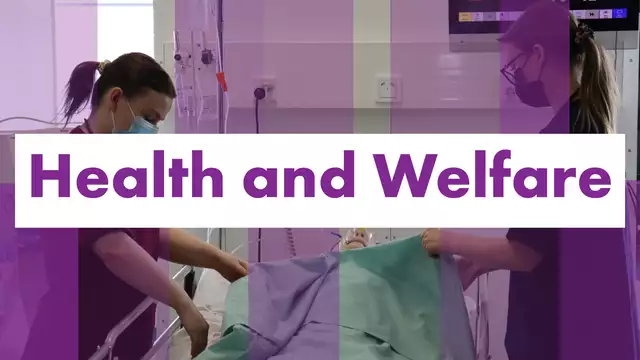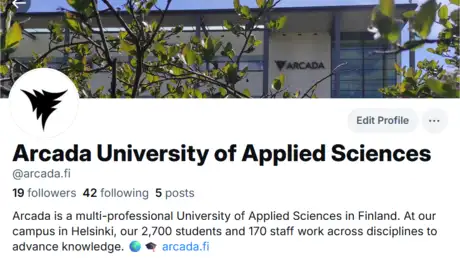
Taking the Heroes Out or Shaping Paramedic Students’ Resilience to Practice
Published: 09.06.2022 / Blog / Publication / Research
“Your ego is writing checks your body can’t cash!”
As consequence of an aging population living at home, increasing social distress and centralization of specialized healthcare in the Western societies, Emergency Medical Services (EMS) is reshaping from the age of blue lights and trauma care to professional frontline healthcare service providers. This paradigm shift is seen especially in Western countries with highly educated paramedic professionals, such as Finland, Norway, UK and Australia. (Paulin et al., 2020, Agarwal et al., 2022, Dúason et al., 2021) Primary healthcare has then more often been integrated into the prehospital context, through use of so-called ‘community paramedics’ (Agarwal et al., 2022, Eaton et al., 2020) and increasing utilizing of phone-based patient triage systems (Roivainen et al., 2020) while the scope of paramedics’ competencies have widened dramatically over the years. As a result, definitions of ‘paramedicine’ are becoming all the more diverse, integrating “emergency and primary care” while being hailed as “essential and integral parts of healthcare systems” and providing “patient centered care”. (Williams et al., 2021).
It is thus hardly news that the heroic restarting of the heart has been replaced by a proverbial ‘ear to the heart’, as an increasing majority of EMS calls are non-acute, more focused on chronic illness and social distress (Agarwal et al., 2019, Mausz et al., 2022). This consequently requires a whole different set of skills and knowledge from paramedic professionals, on top of the acute and emergency care competencies, with wider expectations in scope of practice and perhaps even an updated professional identity for the entire prehospital system, more so for countries with less developed EMS systems (Dúason et al., 2021, Makrides et al., 2022).
All the while, the iconic image of paramedics as critical live-savers holds fast, mostly perpetrated by reality shows and anecdotal heroic stories. There is nothing inherently wrong with that, the paramedic profession has, through time, attained a high level of social prestige among professions, as noted by Majchrowska et al. (2021) However, such preconceived professional identities can potentially lead to a discrepancy as to what Paramedics do , especially among students and graduates with no experience of actual practice.
Image: Pexels.com / Mihhail Nilov
Ambulance work is synonymous with managing and a level of hardiness. Even though there is a positive shift toward acceptance of mental and physical limitations, the culture is still clearly tangible in EMS and rescue professions (Lawn et al., 2020, Ericsson et al., 2022). An attitude of either ‘making it’ or not being ‘fit for the profession’ is easily indoctrinated, even in the education (Holmes, 2017, Williams et al., 2012, Lazarsfeld-Jensen, 2014). Such a simplistic ‘dichotomy of hardiness’ can easily stigmatize need of mental support. This can push EMS professionals, especially those at the start of their careers, to hide or suffocate their emotions, lest they show weakness in front of peers (Jonsson and Segesten, Lawn et al., 2020, Mackinnon et al., 2020). As such, expectation of paramedics to be able to master their skills, knowledge and emotions, in a broad variety of complex situation, is seen as almost a core definition of EMS work. Underlying judgmental attitudes and lack of psychological safety , starting from a sense of inclusion and being able to show uncertainty within the organization, can also further perpetrate this phenomenon. (Ericsson, 2022, Kerrissey et al., 2022)
If not careful, such signals are also unknowingly expressed during the early education, via hidden curriculums , or the ‘implicit sharing of values, norms and beliefs’ related specifically to EMS culture (Mausz et al., 2022). Paramedic students are, in such cases, often infused with a hardiness ideal of managing emotions and showing high performance under pressure during courses and clinical placements, with potentially detrimental effects on their future coping skills and career longevity. Especially the final clinical placement has a major impact on their transition into work life and shaping future role expectations. (Kaihlanen et al., 2021)
This is not without consequences. Although generally content with their line of work, there are indications of Finnish paramedics leaving the profession, partly due to such increased mental workload and too high responsibilities beyond the core work (Katela, 2020). This then becomes a relevant issue to tackle early on in the education; how does the changing role of EMS shape graduate paramedics’ preconceptions of their own professional identity and how should the education support their resilience in handling this discrepancy and their work?
Clinical MacGyvers and airway Jedi – Are they the right stuff?
The phenomenon can be explored through role dissonance among paramedics, that is, the differences in their perceived professional role compared to the actual practice experienced in the field. Studies seem to indicate that paramedics widely show a sense of dissonance as to their professional role in EMS (Mausz et al., 2022). This is mostly the result of the changing scope of practice they encounter on the road vs what is taught in school; less physical trauma and more mental and social trauma.
In an extensive bricolage study, Lazardsfeld-Jensen (2014) describe paramedics showing disappointment and even frustration over their work time being used mostly for ‘elderly and chronically ill’ more than ‘actual rescue missions’. The study goes on to describe a culture rewarding paramedics’ peer regard through ‘proving one’s mettle’ via participation in various traumatic events (Lazarsfeld-Jensen, 2014). In other words, trauma action is seen as more valuable and prestigious within EMS than the mundane and emotional work. This is further supported by Mausz et al (2022), who categorized paramedics, according to previous dimensional definitions, as ‘thrill- and rush-seekers’ and described them as ‘masters of chaotic spaces’, while also noting that certain paramedics even described an ‘anger towards training programs’ for not adequately preparing them for the work of the more common, low acuity, responses.(Mausz et al., 2022)
Concurrently, paramedics also seem to show a sense of inadequacy and almost helplessness, when facing such patients in social and mental distress. (Ericsson et al., 2022) Their internal drive and generally high motivation to do good for their patients and a sense of having necessary competencies to actually make a difference, can then become a bane. For instance, feeling they don’t have enough resources or knowledge to care for patients or by simply not receiving adequate feedback on their actions, as paramedics rarely do after handovers (Wilson et al., 2022, Eaton-Williams et al., 2020, Morrison et al., 2017) even thou it is generally desired (Wilson et al., 2022). This all might leave paramedics with a sense of uncertainty as to their own level of skills, decision-making and outcomes, potentially manifesting in cynicism and frustrations.
The further question then becomes; are the skills and knowledge we train paramedic students enough in preparing them for the clinical work they will face in their practice? Undoubtedly, we give them adequate tools to become clinical MacGyvers, chaos pilots and airway Jedi, yet one can’t help but wonder, are our young padawan paramedics pushed into a culture with misguided expectations and faulty preconceptions, where the tools they have been given are too limited to handle the complexity of prehospital emergency care? If given a hammer, or a decompression needle, everything tends to look like a nail, or a tension pneumothorax. And if the tools they then have are seldom of use, how will that affect them?
Image: www.freepik.com
Mythical heroes down in the valley of despair
Rescue mythologies among paramedics accompanied by the aforementioned role dissonance can also have an effect on job wellbeing as well as patient care. Discrepancies between a role sought-after and a role actually fulfilled can potentially lead to the development of long-term job stress among paramedics, directly affecting work motivation, career longevity and patient safety (Lawn et al., 2020). This is especially relevant, as most of paramedic work could be considered ‘emotion work’, including interactional work with other and little, if any, time to recuperate or work on their own emotions (Henckes and Nurok, 2015). Continuously increasing work around assignments of social distress have been shown to associate to a higher degree of compassion fatigue among paramedic professionals (Ericsson et al., 2021). There are also signs that paramedics’ perception of their own role determines the legitimacy attached to the patients’ case and thus, the paramedics’ decision making in care of elderly patients (Simpson et al., 2017). This is most notable as different cognitive biases can easily steer paramedics’ conveyance decisions with such patients, directly affecting patient-centered care (Johansson et al., 2022).
Interestingly, signs of paramedics’ negative attitudes towards non-urgent calls seem to stem more from their own role dissonance than the patients they encounter. As noted by Mausz et al, “the frustration may be less with the nature of the call itself and more with the dissonance between seeing themselves as someone who responds to emergencies, protects vulnerable patients from harm, and helps people with more “legitimate” (or possibly more “fixable”) problems”. (Mausz et al., 2022) Unfortunately, however, there are indications that even university-level paramedics students’ show negative preconceived attitudes towards elderly patients (Ross et al., 2014) and lower empathy scores towards mental patients and drug users, compared to other healthcare students (Williams et al., 2015, Williams et al., 2016). This slightly worrisome, if not entirely generalizable, finding potentially relates to paramedics’ tendencies to depersonify patients in order to protect themselves, as way of avoidance, from personal mental harm. (Loef et al., 2021) The less you connect to patients, the easier the job becomes. Or perhaps it’s more about having learnt sufficient strategies to cope?
Image: Wikimedia Commons
In general, considering strong cultural expectations toward high performance in EMS cultures and role dissonance felt among paramedics, it is no wonder then, that graduated paramedics easily drift towards either a sense of over-confidence of the skills they have learned, standing on the metaphorical precipice of the Dunning-Kruger rollercoaster, or alternatively develop a strong sense of impostor syndrome, down in that ‘valley of despair’, when (wrongfully) sensing they don’t have what it takes to be as equally knowledgeable and skillful as their (externally perceived) stronger peers and mentors. Both of these misconceptions can be detrimental for self-efficacy and patient care and we, as educators, need to tackle them early on.
The quote at the beginning was from the ‘original’ Top Gun 36 years ago. It was a symbolic moment of the ‘authority against brash overconfidence’ theme, which inspired much of the bravado the movie is known for. But that line bears weight for the paramedic field today also. Rather than training new ‘Mavericks’ to the field of paramedicine, where their skill sets and potential expectations of heroism don’t necessarily fit into the complexity and wicked problems of paramedic work of today, we will need to supplement existing (and necessary) emergency competencies with tools to build their resilience and strengthen realistic expectations, while building knowledge and acceptance of limitations, both emotional and cognitive.
As one paramedic colleague with a long professional history often notes; I accepted long ago what this work is, and also what it is not. That’s why I love my work.
Christoffer Ericsson; Degree Program Director – Emergency Care; PhD Student, MSc Appl Psych, MHc
Reference List:
AGARWAL, G., KEENAN, A., PIRRIE, M. & MARZANEK-LEFEBVRE, F. 2022. Integrating community paramedicine with primary health care: a qualitative study of community paramedic views. CMAJ Open, 10, E331.
AGARWAL, G., LEE, J., MCLEOD, B., MAHMUDA, S., HOWARD, M., COCKRELL, K. & ANGELES, R. 2019. Social factors in frequent callers: a description of isolation, poverty and quality of life in those calling emergency medical services frequently. BMC Public Health
DÚASON, S., ERICSSON, C., JÓNSDÓTTIR, H. L., ANDERSEN, J. V. & ANDERSEN, T. L. 2021. European paramedic curriculum—a call for unity in paramedic education on a European level. Scandinavian Journal of Trauma, Resuscitation and Emergency Medicine, 29, 72.
EATON-WILLIAMS, P., MOLD, F. & MAGNUSSON, C. 2020. Exploring paramedic perceptions of feedback using a phenomenological approach. British paramedic journal, 5, 7-14.
EATON, G., WONG, G., WILLIAMS, V., ROBERTS, N. & MAHTANI, K. R. 2020. Contribution of paramedics in primary and urgent care: a systematic review. Br J Gen Pract, 70, e421-e426.
ERICSSON, C. R. 2022. Can We Destigmatize Healthcare Cultures Through Fostering Psychological Safety in Undergraduate Studies? Arcada Hälso- och välfärdsbloggen [Online]. Available from: https://inside.arcada.fi/hvbloggen/can-… [Accessed 3.12.2020.]
ERICSSON, C. R., LINDSTRÖM, V., RUDMAN, A. & NORDQUIST, H. 2022. 262 Paramedics’ perceptions of job demands and resources in Finnish emergency medical services: a qualitative descriptive study. BMJ Open, 12, A7.
ERICSSON, C. R., NORDQUIST, H., LINDSTRÖM, V. & RUDMAN, A. 2021. Finnish paramedics’ professional quality of life and associations with assignment experiences and defusing use – a cross-sectional study. BMC Public Health, 21, 1789.
HENCKES, N. & NUROK, M. 2015. ‘The first pulse you take is your own’ – but don’t forget your colleagues’. Emotion teamwork in pre-hospital emergency medical services. Sociology of Health & Illness, 37, 1023-1038.
HOLMES, L. J., RUSSELL; BRIGHTWELL, RICHARD; COHEN, LYNNE 2017. Student paramedic anticipation, confidence and fears: Do undergraduate courses prepare student paramedics for the mental health challenges of the profession? Australasian Journal of Paramedicine, 14.
JOHANSSON, H., LUNDGREN, K. & HAGIWARA, M. A. 2022. Reasons for bias in ambulance clinicians’ assessments of non-conveyed patients: a mixed-methods study. BMC Emergency Medicine, 22, 79.
JONSSON, A. & SEGESTEN, K. Guilt, shame and need for a container: a study of post-traumatic stress among ambulance personnel.
KAIHLANEN, A. A.-O., GLUSCHKOFF, K. A.-O., KOSKINEN, S., SALMINEN, L., STRANDELL-LAINE, C., FUSTER LINARES, P., SVEINSDÓTTIR, H. A.-O., FATKULINA, N., L, N. C., STUBNER, J. & LEINO-KILPI, H. 2021. Final clinical practicum shapes the transition experience and occupational commitment of newly graduated nurses in Europe-A longitudinal study.
KATELA, K. 2020. Ensihoitajan alanvaihtoajatuksiin vaikuttavia tekijöitä. YAMK Opinnäytetyö, LAB Ammattikorkeakoulu.
KERRISSEY, M. J., HAYIRLI TC FAU – BHANJA, A., BHANJA A FAU – STARK, N., STARK N FAU – HARDY, J., HARDY J FAU – PEABODY, C. R. & PEABODY, C. R. 2022. How psychological safety and feeling heard relate to burnout and adaptation amid uncertainty. LID – 10.1097/HMR.0000000000000338 [doi].
LAWN, S., ROBERTS, L., WILLIS, E., COUZNER, L., MOHAMMADI, L. & GOBLE, E. 2020. The effects of emergency medical service work on the psychological, physical, and social well-being of ambulance personnel: a systematic review of qualitative research. BMC Psychiatry, 20, 348.
LAZARSFELD-JENSEN, A. 2014. Telling stories out of school: experiencing the paramedic’s oral traditions and role dissonance. Nurse Educ Pract, 14, 734-9.
LOEF, J., VLOET, L. C. M., VIERHOVEN, P. H., VAN DER SCHANS, L., NEYMAN-LUBBERS, Y., DE VRIES-DE WINTER, C. & EBBEN, R. H. A. 2021. Starting ambulance care professionals and critical incidents: a qualitative study on experiences, consequences and coping strategies. BMC Emerg Med, 21, 110.
MACKINNON, K., EVERETT, T., HOLMES, L., SMITH, E. & MILLS, B. 2020. Risk of psychological distress, pervasiveness of stigma and utilisation of support services: Exploring paramedic perceptions. Australasian Journal of Paramedicine, 17.
MAJCHROWSKA, A., PAWLIKOWSKI, J., JOJCZUK, M., NOGALSKI, A., BOGUSZ, R., NOWAKOWSKA, L. & WIECHETEK, M. 2021. Social Prestige of the Paramedic Profession. International journal of environmental research and public health, 18, 1506.
MAKRIDES, T., ROSS, L., GOSLING, C., ACKER, J. & O’MEARA, P. 2022. From stretcher bearer to practitioner: A brief narrative review of the history of the Anglo-American paramedic system. Australasian Emergency Care.
MAUSZ, J., DONNELLY, E. A., MOLL, S., HARMS, S. & MCCONNELL, M. 2022. Role Identity, Dissonance, and Distress among Paramedics. International Journal of Environmental Research and Public Health, 19.
MORRISON, L., CASSIDY, L., WELSFORD, M. & CHAN, T. M. 2017. Clinical Performance Feedback to Paramedics: What They Receive and What They Need. AEM education and training, 1, 87-97.
PAULIN, J., KUROLA, J., SALANTERÄ, S., MOEN, H., GURAGAIN, N., KOIVISTO, M. & KÄYHKÖ, N. 2020. Changing role of EMS –analyses of non-conveyed and conveyed patient in Finland. Scandinavian Journal of Trauma, Resuscitation and Emergency Medicine, 28.
ROIVAINEN, P., HOIKKA, M. J., RAATINIEMI, L., SILFVAST, T., ALA-KOKKO, T. & KÄÄRIÄINEN, M. 2020. Telephone triage performed by nurses reduces non-urgent ambulance missions: A prospective observational pilot study in Finland. Acta Anaesthesiologica Scandinavica, 64, 556-563.
ROSS, L., DUIGAN, T., BOYLE, M. J. & WILLIAMS, B. 2014. Student Paramedic Attitudes Towards the Elderly: A cross-sectional study. Australasian Journal of Paramedicine, 11.
SIMPSON, P., THOMAS, R., BENDALL, J., LORD, B., LORD, S. & CLOSE, J. 2017. ‘Popping nana back into bed’ – a qualitative exploration of paramedic decision making when caring for older people who have fallen. BMC Health Services Research, 17, 299.
WILLIAMS, B., BEOVICH, B. & OLAUSSEN, A. 2021. The Definition of Paramedicine: An International Delphi Study. Journal of multidisciplinary healthcare, 14, 3561-3570.
WILLIAMS, B., BOYLE, M. & FIELDER, C. 2015. Empathetic attitudes of undergraduate paramedic and nursing students towards four medical conditions: a three-year longitudinal study. Nurse Educ Today, 35, e14-8.
WILLIAMS, B., BOYLE, M. & HOWARD, S. 2016. Empathy levels in undergraduate paramedic students: A three-year longitudinal study. Nurse Educ Pract, 16, 86-90.
WILLIAMS, B., BROWN, T. & WINSHIP, C. 2012. The Mismatch Between Perceived and Preferred Expectations of Undergraduate Paramedic Students. Journal of Continuing Education in the Health Professions, 10.
WILSON, C., HOWELL, A.-M., JANES, G. & BENN, J. 2022. The role of feedback in emergency ambulance services: a qualitative interview study. BMC Health Services Research, 22, 296.


